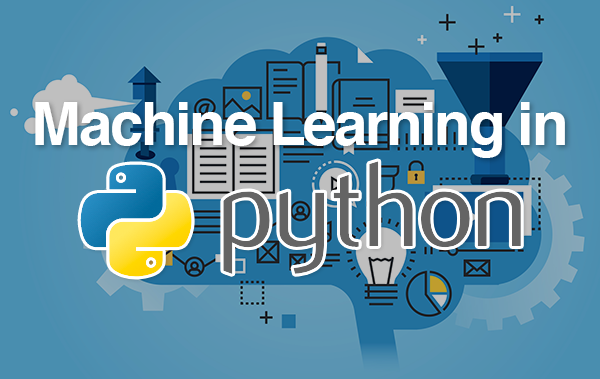How to apply sklearn Extra Tree Classifier to yeast dataset

Extra Trees (Extremely Randomized Trees) is an ensemble technique that is used to improve the performance of decision tree models. Like random forests, it works by training multiple decision trees on different subsets of the data and then combining the predictions of all the trees to make a final prediction. However, unlike random forests, the trees in an Extra Trees classifier are built using random splits of the features rather than the best splits as in traditional decision trees. In this essay, we will be discussing how to use the Extra Trees Classifier from the scikit-learn library to perform classification on the yeast dataset from the Penn Machine Learning Benchmarks (PMLB) library.
The first step in using the Extra Trees Classifier is to install the PMLB library by running the command pip install pmlb in the command prompt or terminal. Once the library is installed, it can be imported into your Python environment by using the command import pmlb.
Once the PMLB library is imported, we can load the yeast dataset by using the command pmlb.fetch_data("yeast"). This will return a list of 14 datasets related to the yeast Saccharomyces cerevisiae. Each dataset in the list contains a different set of features and target variables. It’s important to choose the appropriate dataset for your task and to understand the characteristics of the data.
Next, we need to split our dataset into two parts: training and testing. The training dataset is used to train the model, and the testing dataset is used to evaluate the performance of the model. This can be done by using the command from sklearn.model_selection import train_test_split.
Once we have the training and testing datasets, we can create an instance of the Extra Trees Classifier by using the command from sklearn.ensemble import ExtraTreesClassifier. We can then fit the classifier on the training dataset by using the command clf.fit(X_train, y_train), where X_train is the training dataset and y_train is the target variable.
After the classifier is trained, we can use it to predict the class of new data by using the command clf.predict(X_test), where X_test is the testing dataset. We can then compare the predicted class with the actual class to evaluate the performance of the model by using the command from sklearn.metrics import accuracy_score.
It’s important to note that when using the Extra Trees Classifier, we can specify the number of trees that will be used, which is the number of decision trees that will be trained and combined. Additionally, we can also specify the maximum depth of each tree, the minimum number of samples required at a leaf node, and the number of features to consider when looking for the best split. These parameters can be adjusted to avoid overfitting and to improve the performance of the model.
In conclusion, using the Extra Trees Classifier from the scikit-learn library to perform classification on the yeast dataset from the PMLB library is a powerful machine learning task that can be accomplished with a few simple steps. By understanding the characteristics of the data, creating a model, and training and evaluating the model, we can build a powerful machine learning model that can accurately classify the yeast dataset. The Extra Trees classifier is particularly useful when working with high-dimensional datasets and datasets with a large number of features.
It’s important to keep in mind the specific problem you’re trying to solve and the characteristics of your data when using the Extra Trees Classifier. Additionally, it’s also important to adjust the parameters such as the number of trees, maximum depth, the minimum number of samples required at a leaf node, and the number of features to consider when looking for the best split to avoid overfitting and to improve the performance of the model.
It’s also important to note that when comparing with random forest, Extra Trees Classifier has faster training time and higher variance, which means it can be more sensitive to the specific training data and may not generalize well to new data. Therefore, it’s crucial to evaluate the performance of the model using cross-validation or by using a separate validation set.
In summary, the Extra Trees Classifier is a powerful ensemble technique that can improve the performance of decision tree models. By understanding the characteristics of the data and adjusting the parameters of the model, we can use the Extra Trees Classifier to classify the yeast dataset with high accuracy and make predictions on new data.
In this Applied Machine Learning & Data Science Recipe (Jupyter Notebook), the reader will find the practical use of applied machine learning and data science in Python programming: How to apply sklearn Extra Tree Classifier to yeast dataset.
Disclaimer: The information and code presented within this recipe/tutorial is only for educational and coaching purposes for beginners and developers. Anyone can practice and apply the recipe/tutorial presented here, but the reader is taking full responsibility for his/her actions. The author (content curator) of this recipe (code / program) has made every effort to ensure the accuracy of the information was correct at time of publication. The author (content curator) does not assume and hereby disclaims any liability to any party for any loss, damage, or disruption caused by errors or omissions, whether such errors or omissions result from accident, negligence, or any other cause. The information presented here could also be found in public knowledge domains.
Learn by Coding: v-Tutorials on Applied Machine Learning and Data Science for Beginners
Latest end-to-end Learn by Coding Projects (Jupyter Notebooks) in Python and R:
Applied Statistics with R for Beginners and Business Professionals
Data Science and Machine Learning Projects in Python: Tabular Data Analytics
Data Science and Machine Learning Projects in R: Tabular Data Analytics
Python Machine Learning & Data Science Recipes: Learn by Coding
How to apply sklearn Bagging Classifier to adult income data
How to apply sklearn Extra Tree Classifier to adult income data